Why do the Georgians matter?
Today I have a LONG READ for you. It’s an essay I wrote for May’s BBC History Magazine … and even though it’s Midsummer’s Day already there’s lots of time left to see our 2014 ‘Glorious Georges’ displays at Hampton Court Palace, Kensington Palace and Kew Palace too.
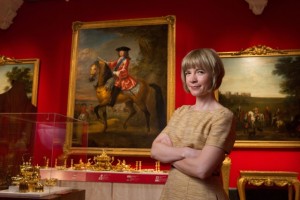 ‘Sometimes it’s a depressing business being a historian of the eighteenth century. It seems that the Tudors, the Victorians and the Nazis get all the glory, with their beheadings, bicycles, and frequent appearances on the National Curriculum.
‘Sometimes it’s a depressing business being a historian of the eighteenth century. It seems that the Tudors, the Victorians and the Nazis get all the glory, with their beheadings, bicycles, and frequent appearances on the National Curriculum.
But 2014 is the year in which the Georgian monarchs fight back. The tercentenary of the accession of George I of 1714 is being celebrated with Georgian exhibition all over Britain, while in Germany curators and historians are eager to celebrate a more positive anniversary than that of World War One.
In reality, the Georgians don’t need to fight: they charm their way into our affections, with their love of ice cream, tea parties, gin, classical architecture, amusing satire and sparkling fashions. They experienced the Scottish Enlightenment, the birth of the novel, and the office of Prime Minister. ‘The Georgian Age’, for many people, is the stately homes of England and Keira Knightley as the Duchess of Devonshire.
While the Georgian aesthetic is known and loved, though, Georges themselves, our Hanoverian monarchs, evoke a less positive response. All too often George I and George II are seen as grumpy, German and indistinguishable. The ‘Horrible Histories’ TV series covers the Georges with its celebrated boy-band performance of ‘Born To Rule’, with ‘Georges One, Three, Four and Two’ singing about how they were ‘born to rule over you, just because our blood was blue’. The song depicts the Hanoverians as unattractively ‘bad’, ‘sad’, ‘mad’ and ‘fat’. And they’ve been neglected by historians too. George II, in particular, ‘can rightly be described as a forgotten king’, says his most recent biographer, Andrew Thompson.
In reality, George I and George II were just as excitingly dysfunctional, in their own way, as Henry VIII. Even better, because theirs was truly a dynasty, with plenty of children, they give us enough characters to fill out a whole soap opera. They were also reasonably good kings: not flashy or showy, admittedly. But under them Britain could truly claim to have become ‘Great’.
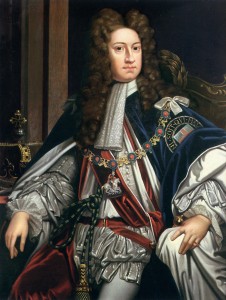 ‘He rejected no woman if she were very willing, very fat and had great breasts’ (Lord Chesterfield on George I) (left)
‘He rejected no woman if she were very willing, very fat and had great breasts’ (Lord Chesterfield on George I) (left)
George I, born Georg Ludwig, Elector of Hanover, was an unlikely king of Great Britain. He only came into line for the throne with the passing of the Act of Settlement in 1701. This was Parliament’s solution of the problem of what to do if Queen Anne died with no surviving heirs: as she did, in 1714, despite having gone through seventeen pregnancies in a desperate attempt to squeeze out an heir to the Stuart throne.
Fate’s finger fell upon Georg because his mother Sophia, Electress of Hanover, a direct descendent of James I, turned out to be Anne’s nearest Protestant relative. Roughly fifty nearer relatives of Anne’s were passed over, as the Act of Settlement had decreed, for their Catholicism. Sophia herself would have been Britain’s queen if she had not died only a few weeks before her distant cousin Anne, meaning that the crown went to her son instead.
Georg Ludwig ruled the little Electorate of Hanover, so-called because he and his fellow Electors had a say in electing their collective overlord, the Holy Roman Emperor. His family had recently risen rapidly up through the ranks of their fellow princely rulers through canny marriages. George I was known by some of his British subjects as ‘Lucky George’ because of his unexpected inheritance of the British Crown at the age of fifty-four, but he was in a pretty lucky position already. Once in Britain, he would openly pine for his homeland, and take every opportunity to return.
When Georg arrived in London in September 1714 to be transformed into George I, he was accompanied by his two German mistresses – one fat, one thin – known as the Elephant and the Maypole. Or at least, this is what the British wanted to believe. This was not the least of many communication problems between George I’s subjects and their new ruler. As George had learned French, German and Latin before even embarking upon English, it was understandable that he spoke it haltingly, and with a thick German accent. In fact, the truth about George I’s supposed mistresses is stranger than fiction, for the ‘fat’ mistress was really his illegitimate half-sister.
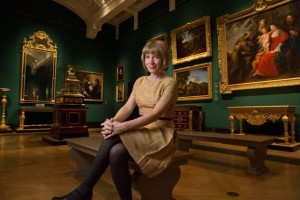 The transplantation of a tight-knit group of Germans into the heart of the British court was bound to cause jealousy and xenophobia. George’s German supporters were seen to monopolize all the best jobs. One particularly striking example was Mohammed, the king’s Turkish valet, who had followed the king across the North Sea. His duties included helping the king to dress in the morning, even treating his haemorrhoids. Content with his Turk, the king failed to appoint a Groom of the Stool, traditionally one of the most valuable and intimate court offices. He therefore disappointed a number of would-be Grooms of the Stool among the British courtiers. Incensed, they put it about that the king ‘keeps his Turk for abominable uses’.
The transplantation of a tight-knit group of Germans into the heart of the British court was bound to cause jealousy and xenophobia. George’s German supporters were seen to monopolize all the best jobs. One particularly striking example was Mohammed, the king’s Turkish valet, who had followed the king across the North Sea. His duties included helping the king to dress in the morning, even treating his haemorrhoids. Content with his Turk, the king failed to appoint a Groom of the Stool, traditionally one of the most valuable and intimate court offices. He therefore disappointed a number of would-be Grooms of the Stool among the British courtiers. Incensed, they put it about that the king ‘keeps his Turk for abominable uses’.
In the light of these sexual slurs, the reality of George’s intimate life is a little disappointing: he had just his single, skinny, long-term official mistress, Melusine von der Schulenburg. But there had been fireworks in the past: back in Hanover in the 1690s, Elector Georg had divorced his wife for adultery, and locked her up in a remote German castle. More torrid accounts of the affair claim that he’d had his wife’s Swedish lover assassinated, and the corpse thrown into the river outside the family’s palace in the city of Hanover.
It was far too good a story to be forgotten, especially as George I arrived in Britain with a notable gap by his side where his wife should have been, and it left him with a lasting image problem. And in fact one of his greatest advantages was rather negative: it was the lack of alternatives. Much of the initial attraction of the Hanoverian dynasty rested upon not who they were, but who they weren’t. They weren’t Catholic. They weren’t absolutist and despotic like the French kings. William Thackeray (a hundred years later) thought that George I: ‘cynical, and selfish, as he was […] was better than a king out of St. Germains, with the French king’s orders in his pocket, and a swarm of Jesuits in train’.
The nearest blood claimant to the British throne was James Stuart, the would-be King James III, who had to gnash his teeth in France while George I peacefully strolled into his new realm. His supporters, the Jacobites, waged a propaganda war, claiming that their man was the truly British alternative to these interlopers from Hanover, a place associated with yokels and the farming of turnips. During the new king’s coronation a spectator was arrested for brandishing a turnip on a stick to make exactly that point. George I also, in terms of personality, did little to help himself. Because he was shy, his new subjects did not really feel that they knew him, and gossip filled the gaps.
Another way in which the king’s influence has been minimized is through the argument that he was the tool of his Whig politicians. ‘The Whigs said George I was king’, says 1066 And All That. The Whiggish argument runs that that Britain, and particularly its system of constitutional government, is the wonder of the western world. This proposition that there was a uniquely British respect for liberty implies that the Georgian monarchs were not very powerful, engaged or even fluent in English. It’s a well-worn canard that George I had to communicate with his first minister, Sir Robert Walpole, in bad Latin, as their best common language. In fact George I did read English newspapers, and is recorded to have spoken in English. More recently Hannah Smith’s revisionist history of the Georgian Monarchy (2006) pointed out that the Hanoverians were far more warmly welcomed by the British than the snide accounts of their courtiers would suggest.
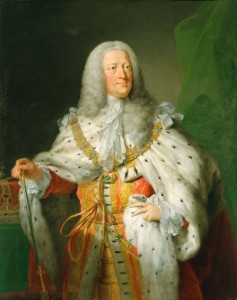 ‘It ran a little in the blood of the family to hate the eldest son’ (Horace Walpole on George II) (left)
‘It ran a little in the blood of the family to hate the eldest son’ (Horace Walpole on George II) (left)
Another advantage that the Hanoverians presented to their new subjects was the endless matter for amusing gossip provided by their private lives. The problem with the Tudors, and then the Stuarts, had been a lack of heirs. Now, with such a fecund family on the throne, there were almost too many of them. Each Georgian king in turn had a terrible relationship with his successor-in-waiting, his eldest son.
And all this was revealed in a press that was much more free than in the more absolute days of the seventeenth century. Due to an administrative mistake in the 1690s, Parliament failed to renew the Licensing Act that had controlled the press, and one result was a profusion of newspapers, pamphlets and satire. No wonder that Voltaire, fleeing the restrictive, patron-based literary sphere of France, found Britain a haven for free speech and a heaven for writers. This was the age of satire.
George I’s notoriously poor relationship with his son was partly a clash of personality: he was as taciturn as his son was volatile and passionate. But their personal difficulties were heightened by politics. Politicians baulked of power under George I flocked instead to the rival court of the Prince of Wales.
And yet, as so often with the Hanoverians, there was an upside too. The very presence of rival camps within the court – that of the king, and his son – allowed the concept of ‘His Majesty’s loyal opposition’ to be born. You didn’t need to take up arms to express displeasure with the regime. You could just go to the prince’s parties instead. And because both George I and George II loved to go back to Hanover for summer holidays, their politicians had to get on with government even when their king was away. The concept of Cabinet responsibility emerged in these frequent royal absences.
One of the most epic episodes of Hanoverian dysfunctionality took place at Hampton Court in 1737. George II, by then a decade a king, was at loggerheads with his son Frederick Prince of Wales. Frederick, whose wife Augusta was pregnant, was determined to deprive his hated parents of their traditional right of attending the royal birth. ‘At her labour I positively will be’ George II’s wife Caroline had said, ‘let her lie-in where she will’.
But when his teenage wife’s labour pains began at Hampton Court in the middle of the night on Sunday 31 July, Prince Frederick bundled her into a carriage and drove her through the night to St James’s Palace. Augusta ‘cried and begged not to carried away in her painful condition’. Frederick’s response was to use such force to hold her down in the coach that he hurt his back, while his wife’s skirts became slowly soaked with ‘the filthy inundations which attend these circumstances’. The baby was finally born in the early morning at St James’s Palace. A lack of preparation there meant that the little girl had to be wrapped in a table napkin.
The king and his son exchanged righteously indignant letters complaining about each other’s conduct, all published in The Gentleman’s Magazine. George II’s perceived cruelty to his son, and his neglect of his popular queen, Caroline, in favour of mistresses, meant that his reputation sank low. A Thames waterman travelling past Hampton Court by boat yelled curses at the king ‘and all his Hanover dogs’ as he walked in the palace’s riverside garden.
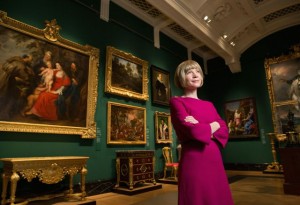 And yet despite all the sniping, George II stayed secure on his throne. The troublesome Frederick ended up predeceasing his father. George II came into his own, as a fiery-tempered commander in the field, at the victorious battle of Dettingen in 1743, part of the War of the Austrian Succession. He also took (forever to his disfavour with the people of Scotland) decisive action to defeat a Jacobite rebellion, sending his second, soldier son the ‘Butcher’ Duke of Cumberland to dispatch Bonnie Prince Charlie and his rebellious Highlanders at the battle of Culloden in 1745. After this dramatic engagement, he must have felt at last secure: ‘I never saw the king in such glee’, one courtier said. As Andrew Thompson puts it, ‘effective leaders are not necessarily nice people’.
And yet despite all the sniping, George II stayed secure on his throne. The troublesome Frederick ended up predeceasing his father. George II came into his own, as a fiery-tempered commander in the field, at the victorious battle of Dettingen in 1743, part of the War of the Austrian Succession. He also took (forever to his disfavour with the people of Scotland) decisive action to defeat a Jacobite rebellion, sending his second, soldier son the ‘Butcher’ Duke of Cumberland to dispatch Bonnie Prince Charlie and his rebellious Highlanders at the battle of Culloden in 1745. After this dramatic engagement, he must have felt at last secure: ‘I never saw the king in such glee’, one courtier said. As Andrew Thompson puts it, ‘effective leaders are not necessarily nice people’.
But how effective was George II? The eighteenth century has often been painted as the age of the people, indeed A Polite and Commercial People (1992), as Paul Longford’s influential social history had it (although he also charted the ways in which the Georgians were unruly, sentimental and often poverty-stricken). There is a beguiling narrative of the eighteenth century – recently re-spun in the British Library’s ‘Georgians Revealed’ exhibition – in which something like a middle class pushed forwards all the key developments in art, architecture, culture and music, while the court itself was a barren backwater, presided over by the anti-culture George II, who would claim, in his German accent, that he hated all ‘boets and bainters’.
Yet this is to overlook the fact that the Hanoverians were enthusiastic participants in culture. Both George I and George II, for example, often visited London’s theatres and operas alongside their subjects. Indeed, Queen Caroline was a royal patron of intellectuals on a scale not seen since the clever king Charles II. She came from a German tradition of lively, intelligent royal women that was far distant from the British approach that gave us the poorly-educated and unimpressive Queens Mary and Anne. And indeed, the Hanoverians may not have been splashing the cash which drove the cultural life of the country, but they created the conditions in which it was possible for it to thrive.
Their courtiers may have thought them dull and generations of students may have struggled to remember which was which. Yet these uncharismatic Hanoverian monarchs were unafraid to fight when it mattered. While Culloden and the profits of the slave trade form dark stains on their reigns, it was on their watch that many of the institutions and attitudes of modern British were made.
Complex, colourful, contradictory and conflict-filled, the Georgian age has so many good stories. It’s surprising that those of the individual Hanoverian monarchs are not better known among them. Perhaps 1714 is the year to change all that.’
Read more:
Ragnhild Hatton, George I: Elector and King (Thames and Hudson, 1978)
Hannah Smith, Georgian Monarchy (Cambridge University Press, 2006)
Andrew Thompson, George II (Yale University Press, 2011)
Lucy Worsley, Courtiers, The Secret History of the Georgian Court (Faber & Faber, 2011)






Hmm, what *did* happen to the Scottish Enlightenment, I wonder?
The Georgians matter since they laid the foundations of the currnet system of government in the UK Lts us not forget that the last Georgian monarch lived until 1901 OK Victoria has a place all her own in history but she was born a Geogian as was my great great grandfather who was born in 1811 and started life as a farm labour but ended up working for the railways as did many of his decsendenents
The Georgians are much closer to us than we think if you take a step back So despite the Georgian monarchs being overshadowed by the Tudors and Victoria they are worth their place at the table of English history if only for the advance of everyman that took place during their reigns
Interesting article particularly the point that the early Georgians created the space for the rise of Britain and the advances in science, industry, the arts and philosophy, Thereby creating the foundations for the Victorians who increasingly seem to be an aberration in the nation’s history particularly the social morals that they developed.
I recently visited Kew Palace which I enjoyed very much with the contrast between rooms that had been restored as those showing the structural details.